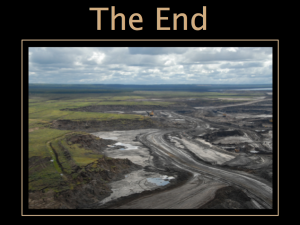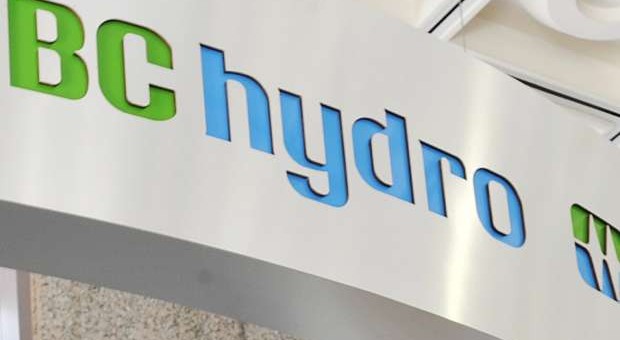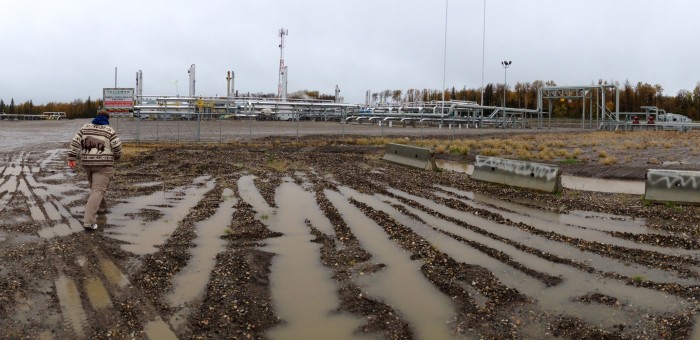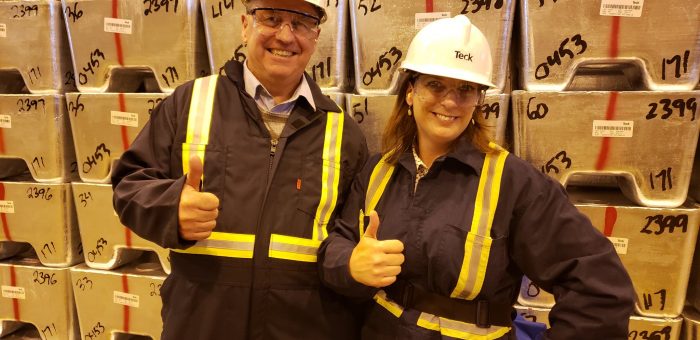Site C
Unfortunately BC Greens force baby to get thrown out with bathwater on Clean Energy Bill
Last week I wrote about BC NDP’s Bill 17: Clean Energy Amendment Act, 2020 that proposed amendments to the Clean Energy Act allowing BC Hydro to:
- Implement a 100% clean energy standard;
- Remove BC Hydro’s self-sufficiency provision. That is BC Hydro is currently required to hold the rights to enough electricity from generating facilities solely within the province to meet its projected energy demand (more on this below).
- Remove Burrard Thermal from the list of heritage assets which would allow BC Hydro to dispose of, or develop, this asset.
In my blog post entitled Bill 17, Burrard Thermal, BC Hydro self sufficiency and clean electricity, I detailed a series of amendments that ensured:
- BC can still implement a 100% clean energy standard;
- Burrard Thermal will be removed from the list of BC Hydro’s heritage assets;
- BC Hydro’s self sufficiency requirement for average water conditions at their legacy hydro electric dams is retained;
- The definition of clean electricity reverts back to the original Clean Energy Act.
That blog post, together with my exchange during Question Period with the Minister of Energy Mines and Petroleum Resources on July 15th, provides a comprehensive analysis of why I proposed the amendments. I conclude the post with this:
I have communicated my intention of supporting the bill at second reading to both the BC NDP and the BC Liberals. If the bill fails at second reading, I won’t get a chance to introduce my amendments during committee stage and I fear that its positive aspects will be lost. That is, the preverbial baby will be thrown out with the backwater. The onus is ultimately on my former colleagues in the BC Green Party to indicate whether or not they support the Bill as it stands, or the amended Bill as I have proposed. Under the “good faith and no surprises clause” of the Confidence and Supply Agreement Premier Horgan and I signed in 2017, the BC Greens will have to communicate their intentions to government prior to the bill being called for debate.
In an odd press release and through an an even more odd, and unsupportable amendment, the BC Greens made it clear that this Bill will die on the order papers. And this troubles me.
The press release appears to be tone deaf. The feedback my office received from Indigenous communities has been almost exclusively on the government’s proposed removal of the self sufficiency clause (see my blog and also my Question Period exchange for more details). Yet the BC Greens propose no amendments in this regard and instead make the bizarre claim that more consultation is needed. The BC Greens could have either proposed to support my amendments to remove the self sufficiency clause, which has been sitting on the order papers since July 14, or introduced similar amendments themselves. This would ensure that the very positive aspects of Bill 17 are passed in a timely fashion. They chose not to, thereby ensuring Bill 17 will die on the order papers.
Unfortunately, the BC Greens’ proposed amendment is unsupportable and in my view shows a lack of understanding of the complexities of the energy file. I too heard feedback from stakeholders that the definition of clean electricity was problematic. However, many of the people raising this issue didn’t realize that the existing Clean Energy Act has very similar regulation enabling legislation. My amendments ensured that the existing definition remained in place for clarity.
Below I reproduce all definitions so I can expand upon this:
The various definitions
1) Existing definition in Clean Energy Act:
“clean or renewable resource” means biomass, biogas, geothermal heat, hydro, solar, ocean, wind or any other prescribed resource;
[there is no definition of clean electricity]
2) BC NDP government proposed change:
“clean electricity” means electricity
(a) generated from a clean resource, or
(b) deemed under the regulations to be clean electricity;
“clean resource” means a prescribed resource;
3) My proposed amendment to government’s change:
“clean electricity” means electricity generated from a clean or renewable resource;
(a) generated from a clean resource, or
(b) deemed under the regulations to be clean electricity;
“clean resource” means a prescribed resource;
4) BC Green proposed amendment to government’s change:
“clean electricity” means electricity generated from a renewable non-fossilized resource, including biomass, biogas, geothermal heat, hydro, solar, ocean and wind;
(a) generated from a clean resource, or
(b) deemed under the regulations to be clean electricity;
“clean resource” means a prescribed resource;
You’ll see that the government proposed to essentially leave the definition of “clean electricity” up to regulation. My amendments simply reverted the definition to what has been in place in the existing Act for more than a decade.
The BC Greens basically took the existing definition in the Clean Energy Act and added “non fossilized resource”. While at first glance this might seem sensible, it is problematic for a number of reasons:
1) “non-fossilized resource” is not defined in the bill.
2) Their definition of “clean electricity” may in fact preclude aspects of the establishment of a hydrogen economy. One of the main ways to generate hydrogen is to use steam-methane reformation and partial oxidation to strip it from methane molecules.
3) Despite the BC Green claim, leaving in: “clean resource” means a prescribed resource means that the definition of clean electricity and clean resources is not in fact stronger. It is, ironically, weaker.
In summary, it appears to me that rather than doing what is right and ensuring that the key aspects of the bill are retained while more work is done on the self sufficiency clause, as I proposed, the BC Greens have chosen to introduce 11th hour politically-motivated amendments as a face-saving exercise.
I am profoundly disappointed in the BC Greens for forcing the baby to be thrown out with the bathwater on Bill 17. As I noted earlier, under the “good faith and no surprises clause” of the Confidence and Supply Agreement Premier Horgan and I signed in 2017, the BC Greens should communicate their intentions to government prior to the bill being called for debate. I’m not sure what the BC Greens were thinking, but I certainly understand why the BC NDP might not choose not to bring this bill forward for debate in light of the uncertainty created by the BC Green position on this file.
Bill 17, Burrard Thermal, BC Hydro self sufficiency & clean electricity
Over the last few days there has been a flurry of emails to MLAs around the province concerning BC NDP’s Bill 17: Clean Energy Amendment Act, 2020. These emails articulate opposition to the removal of BC Hydro’s “self sufficiency clause”.
Let’s take a look at this issue in more detail.
Bill 17 proposes changes to the Clean Energy Act and Utilities Commission Act to give BC Hydro the ability to consider a range of energy resources and asset options as it prepares its Integrated Resource Plan.
The bill has been put together in what teachers reading this will recognize as a “two stars and a wish” format. That is, sandwiched between two very positive changes is one that is creating a great deal of concern.
The bill proposes amendments that will allow BC Hydro to:
- implement a 100% clean energy standard;
- Remove BC Hydro’s self-sufficiency provision. That is BC Hydro is currently required to hold the rights to enough electricity from generating facilities solely within the province to meet its projected energy demand (more on this below).
- Remove Burrard Thermal from the list of heritage assets which would allow BC Hydro to dispose of, or develop, this asset.
You’ll get absolutely no argument from me about the importance of implementing a 100% clean energy standard. The bill does not require 100% of BC’s electricity to be produced from clean sources, but it does set up a reporting structure and the intention is clearly to move in that direction as part of CleanBC, which the BC NDP government and I developed collaboratively in 2018. The requirement for 100% clean electricity would have to be set through regulation (Order in Council) and presumably that would occur after consultation with Washington, Oregon and California as to the precise definition of what is considered “clean electricity”. Presently, about 95% of BC’s electricity is generated from renewables.
You’ll also get absolutely no argument from me about the needs to mothball Burrard Thermal. Burrard Thermal was shut down in 2016 by the previous BC Liberal government after announcing it would do so in 2013. It sits on 78 acres of waterfront property in Port Moody that could be put to better use. What’s particularly strategic about the location is that it already has transmission lines to the area and so could supply power to heavy users of clean electricity. In fact, this strategic asset could be used as a carrot to attract to our province industry looking for access to clean energy as a means of demonstrating corporate leadership and developing green branding. Ever since I got elected in 2013, I have been pointing out that British Columbia should be using its abundant clean electricity resources to attract cleantech and manufacturing industries here. And so I am very supportive of government’s intentions in this regard.
What’s more troubling is the removal of BC Hydro’s self-sufficiency provision. In reality, BC Hydro does not actually have a stringent self-sufficiency clause in place, although we used to. That’s because on February 3, 2013 the BC Liberals relaxed this clause (to protect ratepayers from hydro increases) by changing the requirement for BC Hydro to be self sufficient for average instead of critical (i.e. the most adverse sequence of stream flows occurring within the historical record) water conditions at their legacy hydro electric dams. Back in May 2019, I expanded on BC Hydro’s lack of self sufficiency in a series of questions I asked the Minister of Energy, Mines and Petroleum Resources.
Much like the BC Liberals wanted to protect ratepayers from hydro increases, the BC NDP clearly want to do the same. The removal of the rest of the self sufficiency clause would create electricity trading opportunities with the United States via the highly successful power trading arm of BC Hydro — Powerex. The US is awash with very cheap solar power that Powerex could purchase during the day and at night, when the sun isn’t shining, they could sell back hydro power from our legacy dams at a premium. The arbitrage opportunities are boundless and it is no doubt that this would a) protect ratepayers from hydro rate increases and b) bring in much needed revenue to our province.
But here’s the twist, in doing so, we will likely put the final nail in the coffin for BC’s once vibrant clean energy sector.
When the BC NDP introduced Bill 17: Clean Energy Amendment Act, 2020 on June 23, I immediately determined that it was problematic. The problem was not with the desire for BC Hydro to keep rates low or use our legacy dams like batteries (one of my very first blog posts upon getting elected was on this topic), but rather that some of the unforeseen consequences and missed opportunities had not been fully explored (see for example my question to the Minister of Energy Mines and Petroleum Resources on July 15, 2020). And so I immediately set out to work with the BC Legislative drafters to propose amendments to the Bill (reproduced below). The amendments have been sitting on the order papers since July 14 and will be moved during committee stage for Bill 17.
The amendments ensure that:
- BC can still implement a 100% clean energy standard;
- Burrard Thermal will be removed from the list of BC Hydro’s heritage assets;
- BC Hydro’s self sufficiency requirement for average water conditions at their legacy hydro electric dams is retained;
- The definition of clean electricity reverts back to the original Clean Energy Act.
Should these amendments pass, the positive aspects of Bill 17 will be retained whereas the more troubling components will be removed.
I have communicated my intention of supporting the bill at second reading to both the BC NDP and the BC Liberals. If the bill fails at second reading, I won’t get a chance to introduce my amendments during committee stage and I fear that its positive aspects will be lost. That is, the preverbial baby will be thrown out with the backwater. The onus is ultimately on my former colleagues in the BC Green Party to indicate whether or not they support the Bill as it stands, or the amended Bill as I have proposed. Under the “good faith and no surprises clause” of the Confidence and Supply Agreement Premier Horgan and I signed in 2017, the BC Greens will have to communicate their intentions to government prior to the bill being called for debate.
I look forward to the exciting opportunities for innovation that present themselves with the removal of Burrard Thermal from the list of BC Hydro’s heritage assets and the move of BC to 100% clean electricity.
Proposed Amendments to Bill 17
17 Mr. Weaver to move, in Committee of the Whole on Bill (No. 17) intituled Clean Energy Amendment Act, 2020, to amend as follows:
SECTION 1, by deleting the text shown as struck out and adding the underlined text as shown:
1 Section 1 (1) of the Clean Energy Act, S.B.C. 2010, c. 22, is amended
(a) in the definition of “acquire” by striking out “used in relation to the authority” and substituting “in sections 7, 12 and 15”,
(b) by adding the following definitions:
“clean electricity” means electricity generated from a clean or renewable resource;
(a) generated from a clean resource, or
(b) deemed under the regulations to be clean electricity;
“clean resource” means a prescribed resource;
“compliance period” means a prescribed period; , and
(c) by repealing the-definition of “electricity self sufficiency”, and
(d)(c) by adding the following definitions:
“grid-connected customer” means a person in British Columbia who receives service through a direct or indirect connection to the British Columbia electrical transmission grid, other than a person in the Northern Rockies Regional Municipality;
“regulated person” means
(a) the authority,
(b) a prescribed public utility or class of public utilities, or
(c) a prescribed person or class of persons who deliver electricity to grid-connected customers; .
SECTION 2, by deleting the text shown as struck out and adding the underlined text as shown:
2 Section 2 is amended by adding the following paragraph:
(a) by repealing paragraphs (a) and (n), and
(b) by adding the following paragraph:
(q) to serve grid-connected customers with clean electricity.
SECTION 3, by deleting section 3.
SECTION 4, by deleting section 4.
SECTION 6, by deleting section 6.
SECTION 8, by deleting the text shown as struck out and adding the underlined text as shown:
8 Section 37 is amended by adding the following paragraphs:
(a) by adding the following paragraphs:
(a.1) for the purposes of the definition of “clean electricity” in section 1 (1), deeming electricity delivered under any of the following to be clean electricity:
(i) a specified contract or class of contracts;
(ii) a specified rate or class of rates;
(iii) a specified international agreement;
(a.2) a regulation made under paragraph (a.l) may prescribe that of the electricity delivered, a specified percentage is deemed to be clean electricity;
(a.3) prescribing resources for the purposes of the definition of “clean resource” in section 1 (1);
(a.4)(a.1) prescribing a period for the purposes of the definition of “compliance period” in section 1 (1);
(a.5)(a.2) prescribing public utilities, classes of public utilities, persons and classes of persons for the purposes of the definition of “regulated person” in section 1 (l); ,
(b) in paragraph (c) by striking out “sections 6 and 13” and substituting “section 13”, and
(c) by adding the following paragraphs:
(j) prescribing requirements for the purposes of section 19.1;
(k) prescribing matters that must be addressed in a report prepared under section 19.2 (1);
(l) for the purposes of section 19.2 (2), prescribing requirements respecting the preparation, verification and submission of reports, including, without limitation, the following:
(i) respecting the form and content of reports;
(ii) respecting who may conduct verifications;
(iii) respecting the conduct of verifications;
(iv) requiring reports or statements in relation to verifications, and respecting the form and content of those reports and statements;
(v) respecting the dates by which reports must be submitted to the minister.
SECTION 10, by deleting section 10.
SECTION 11, by adding the underlined text as shown:
11 Sections 44.1 (8) (b), 44.2 (5) (c), 46 (3.1) (c) and 71 (2.1) (c) and (2.5) (c) of the Utilities Commission Act, R.S.B.C. 1996, c. 473, are amended by striking out “sections 6 and 19 of the Clean Energy Act” and substituting “sections 6, 19 and 19.1 of the Clean Energy Act”.
On the clean energy economic opportunity for Indigenous communities in BC
Today in the legislature I rose during question period to ask the Minister of Energy, Mines and Petroleum Resources how he reconciles his government’s claim that it is committed to reconciliation with Indigenous peoples while at the same time introducing measures that will restrict their opportunities for clean energy economic development. I also asked him whether he was willing to instruct B.C. Hydro to declare force majeure on the existing Site C construction contracts, as opposed to the IPP contracts, to save billions upon billions of ratepayer dollars, and instead instruct B.C. Hydro to issue calls for power at market rate for any future power needs.
Below I reproduce the text of our exchange.
Video of Exchange
Question
A. Weaver: Many Indigenous communities in British Columbia anticipated being able to sell surplus electricity to B.C. Hydro. Despite this government’s professed commitment to reconciliation, the decision by B.C. Hydro to cancel its standing offer program has placed these communities in a very difficult position.
As I’m sure the minister is aware, reconciliation is a multifaceted process that involves building genuine, long-lasting economic partnerships with Indigenous communities. Otherwise many such communities will continue to struggle economically. More recently, with the proposed changes to the self-sufficiency clause in the Clean Energy Act, First Nations aspiring to become clean energy producers will be dealt yet another serious blow.
My question is to the Minister of Energy, Mines and Petroleum Resources. How can this government claim that it is committed to reconciliation with Indigenous peoples while at the same time introducing measures that will restrict their opportunities for economic development?
Answer
Hon. B. Ralston: I want to thank the member for Oak Bay–Gordon Head for his question. Let’s begin by remembering that the old government signed insider deals for power at five times the market price. That created a $16 billion obligation owed by British Columbians. That’s $16 billion in unnecessary costs.
We are committed to keeping B.C. Hydro rates low and building a low-carbon economy for people. Maintaining affordable electricity is critical to electrifying our economy and meeting our CleanBC goals. The standing offer program was not compatible with this.
Our government understands — and I acknowledge the import of the member’s question — that many Indigenous communities view small-scale private power as economic development opportunities. Indeed, when we suspended the standing offer program in February 2019, we exempted five projects in development that had significant First Nations involvement.
I agree with the member that it’s important to support Indigenous communities in clean energy economic development. Just last month we announced $13 million for four clean energy projects to help remote communities get off diesel.
Supplementary Question
A. Weaver: Over the last decade, numerous First Nations have banked heavily on clean energy projects as an economic development strategy. Many have entered into agreements with independent power producers to do the same. On Vancouver Island, for example, 13 of the 14 Nuu-chah-nulth First Nations are either current or perspective stakeholders in renewable energy products. The Tla-o-qui-aht Nation has poured over $50 million into clean energy projects and has plans to spend an additional $100 million.
Successful endeavours, such as the T’Sou-ke Nation’s solar farm in the Premier’s own riding, have helped get Indigenous nations off diesel, while others that have received financial backing from the government promise to do the same. For many Indigenous communities across British Columbia, the opportunity to sell excess electricity is a vital component of their future economic plans.
My question, once more, is to the Minister of Energy, Mines and Petroleum Resources. Will the minister instruct B.C. Hydro to declare force majeure on the existing Site C construction contracts, as opposed to the IPP contracts, to save billions upon billions of ratepayer dollars, and instead instruct B.C. Hydro to issue calls for power at market rate for any future power needs?
To remind the minister, market rate is not 20 cents a kilowatt hour. It’s not 15 cents a kilowatt hour. It is a few cents a kilowatt, as is demonstrated worldwide with the price of solar and wind being lower than the price of coal and natural gas combustion in most jurisdictions.
Answer
Hon. B. Ralston: Once again, I’d like to thank the member for Oak Bay–Gordon Head for his question. As a government, we are committed to working collaboratively with Indigenous communities on opportunities for economic development. We consulted widely, including engagement with Indigenous nations, on the Comprehensive Review of B.C. Hydro: Phase 2 Interim Report, which includes the proposal on the self-sufficiency requirement.
I think it’s important to note that the changes that we are proposing will not happen overnight. They will allow B.C. Hydro to consider out-of-province energy, as one option — one option among many — to providing clean and affordable energy, as part of their next 20-year plan. These changes support our climate plan, CleanBC, and they allow B.C. Hydro to continue purchasing power from First Nations-owned projects.
My ministry has a wide range of programs that support Indigenous communities to transition to clean energy and improve energy efficiency. For example, we’ve invested $5 million in the B.C. Indigenous clean energy initiative. This initiative supports community clean energy projects. I appreciate the member’s questions on this important topic. Our government will continue to work with Indigenous communities to identify clean energy opportunities.
BC & federal governments announce another $680 million to further subsidize future fossil fuel development
Yesterday the Premier and Prime Minister made a joint announcement promising another $680 million subsidy of the BC natural gas sector. In this, the latest example of corporate welfare for the fossil fuel sector, the BC NDP government promised substantive taxpayer-funded handouts aimed at electrifying upstream natural gas activities.
Of course, investing in electrification infrastructure that moves our province to a greener economy must be a priority, but it is a missed opportunity when it is only to potentially offset future emitters, and the rest of the economy- and our emissions targets- are left treading water. The government could, and should, have simply required electrification through regulation. Instead, this latest announcement expands upon the litany of previous subsidies doled out by the BC NDP government to try and and deliver what the previous BC Liberal government couldn’t — a single LNG export facility,
Below I reproduce the media statement we released in response to this announcement.
Media Statement
B.C., federal governments announce $680 million to support future fossil fuel development in the province
For immediate release
Aug. 29, 2019
VICTORIA, B.C. – Provincial and federal governments announced today they will subsidize fossil fuel development further by committing $680 million to electrify natural gas facilities that have yet to be built.
“By prioritizing this $330 million to potentially reduce the future emissions from fossil fuel companies, the NDP government is not only providing more subsidies for the growth of the fossil fuel sector, but are also neglecting their responsibility to this province to be making the investments for an alternative future,” B.C. Green Party Leader Dr. Andrew Weaver, MLA from Oak Bay- Gordon Head. ”Investing in electrification infrastructure that moves our province to a greener economy must be a priority, but it is a missed opportunity when it is only to potentially offset future emitters, and the rest of the economy- and our emissions targets- are left treading water.
“British Columbians are looking for leadership that is investing in their future by supporting the industries of tomorrow, not the dinosaurs of yesterday. With this massive subsidy, the NDP are investing in the very industries whose practices for the last many decades have contributed to the climate change crisis that is affecting British Columbians every single day- the heatwaves, droughts, wildfires, and species declines. Government’s own strategic risk assessment they released without so much as a statement last month contained clear warnings to this affect- again, warnings scientists have been making for decades.
“We should seize the opportunity to be a global leader in building a clean, vibrant economy based on new industries that aren’t the source of climate change. Instead, with today’s announcement we are asked to celebrate that we may slightly reduce the pollution coming from our oil and gas sector, even as it continues to grow. I know we can do better.”
-30-
Media contact
Macon L.C. McGinley
Press Secretary, B.C. Green Caucus
+1 250-882-6187 |macon.mcginley@leg.bc.ca
Presenting at the Clean Energy BC Spring Conference: Powering Generations — Legacy to the Future
Today I had the distinct honour of giving a keynote presentation at the 2019 Spring Conference of Clean Energy BC whose theme was Powering Generations: Legacy to the Future. After the presentation we toured the Teck smelter in Trail to explore innovation in the mining sector first hand.
Below I reproduce the text and slides of my speech.
Text and Slides of Speech
It’s a distinct honour for me to be invited to address you, the delegates to Clean Energy BC’s Spring Conference: Powering Generations: Legacy to the future.
 Over these past 25 years Clean Energy B.C. has been the voice of British Columbia’s Clean Energy sector and I am sincerely grateful for your ongoing contributions to our province.
Over these past 25 years Clean Energy B.C. has been the voice of British Columbia’s Clean Energy sector and I am sincerely grateful for your ongoing contributions to our province.
The BC Green Party and I share your goal to support the growth of British Columbia’s clean energy sector and we will continue to do what we can to improve the regulatory and economic environments for clean energy production through our work in the B.C. legislature.
Since first getting elected in 2013, I’ve watched growing uncertainty emerge in British Columbia’s clean energy sector. I’ve watched the Canadian Wind Energy Association pull out of BC. I’ve watched BC Hydro’s standing offer program grind to a halt.
I’ve witnessed the release of a poorly researched report to justify government’s ideological position on independent power producers. And I’ve watched a growing sense of overall frustration emerge as your sector struggles to remain viable.
Of course, as we all know, government’s decision to proceed with the construction of the Site C hydroelectric project was both unnecessary and fiscally-foolish.
It has undermined the investments many of you made in clean energy here in BC. And it puts the ratepayer on the hook for inevitable cost overruns down the road.
But we are where we are and for me, it’s important to look ahead.
I entered politics via an unusual route. By now, most of you know that prior to my election as the MLA for Oak Bay – Gordon Head (and subsequently becoming leader of the B.C. Green Party), I was Lansdowne Professor and Canada Research Chair in Climate Modelling and analysis at the University of Victoria.
I’d served as a Lead Author on the United Nations Intergovernmental Panel on Climate Change 2nd, 3rd, 4th and 5th scientific assessments. I was Chief Editor of the Journal of Climate and I had the honour of participating as a member of BC’s first Climate Action Team set up in 2007 under Gordon Campbell’s leadership.
The year 2007 was a remarkable period in British Columbia’s history with respect to the development of climate policy. It was also a particularly noteworthy time for me.
I’d been publishing papers in the field of climate science for more than two decades, all the while listening to political leaders around the world talk about the importance of dealing with global warming while concomitantly doing virtually nothing to reduce greenhouse gas emissions and offering staggering subsidies to the fossil fuel sector.
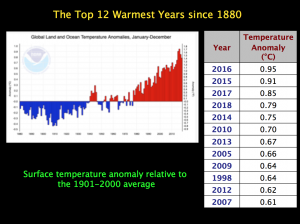 But in 2007 in British Columbia I finally saw a government take the matter seriously and recognize the challenge of global warming for what it was: an economic opportunity for innovation like never before. Gordon Campbell recognized that early leadership would pay off and that all eyes in the world would be turned to BC in 2010 when we hosted the Winter Olympics.
But in 2007 in British Columbia I finally saw a government take the matter seriously and recognize the challenge of global warming for what it was: an economic opportunity for innovation like never before. Gordon Campbell recognized that early leadership would pay off and that all eyes in the world would be turned to BC in 2010 when we hosted the Winter Olympics.
On November 20, 2007 the Honourable Barry Penner, Minister of Environment, introduced the Greenhouse Gas Reduction Targets Act, which put into law British Columbia’s 2020 reduction target of 33% and a new 2050 reduction target of 80% relative to 2007 levels.
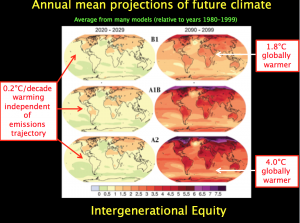 The act also required carbon neutrality for the public sector, including universities, schools, hospitals, Crown corporations, and the government by 2010. And over the next several years as government rolled out its policy measures, BC head off on a path to meet its legislated targets.
The act also required carbon neutrality for the public sector, including universities, schools, hospitals, Crown corporations, and the government by 2010. And over the next several years as government rolled out its policy measures, BC head off on a path to meet its legislated targets.
But all of our successes started to unravel shortly after British Columbia’s provincial leadership changed in 2010. In fact, every year since the 2011 change of leadership, emissions have gone up.
Why? Because of the signal government sent to the market that our emissions reductions targets no longer mattered — that economic prosperity would be found in industries from the last century, and that they would help take us back there.
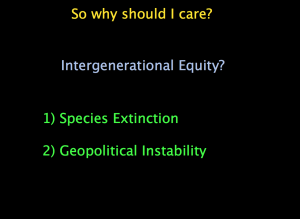 It happened almost immediately after the leadership of the BC Liberals changed. In fact, I remember participating with Judith Sayers, Paul Kariya and Graham Horn (from Innergex) at a press conference hosted by Clean Energy BC in September 2011 where we pleaded with government to stick with its plan to become self-sufficient in clean energy.
It happened almost immediately after the leadership of the BC Liberals changed. In fact, I remember participating with Judith Sayers, Paul Kariya and Graham Horn (from Innergex) at a press conference hosted by Clean Energy BC in September 2011 where we pleaded with government to stick with its plan to become self-sufficient in clean energy.
In 2012, knowing that scientists had done their job in defining the problem and that it was up to politicians to do theirs if we are to deal with the challenge of global warming — and they are not — I accepted an invitation to run as a candidate representing the BC Green party. I could no longer sit on the sidelines as the legacy of Mr. Campbell’s climate leadership was dismantled.
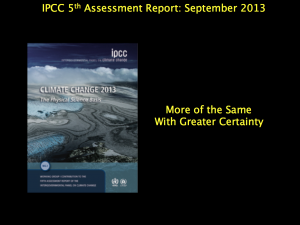 The BC Liberals under Christy Clark had stifled clean innovation and introduced policies that further entrenched “dig-it and ship-it” oil and gas development.
The BC Liberals under Christy Clark had stifled clean innovation and introduced policies that further entrenched “dig-it and ship-it” oil and gas development.
And were the BC Greens not holding the balance of power in a minor government, I fear that the BC NDP would be no different (as witnessed by the outrageous giveaway involved in their proposed further subsidies to the LNG industry).
When the market no longer supported these activities, successive governments doubled done by creating more and more subsidies in a desperate attempt to squeeze water from a stone.
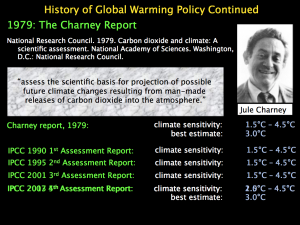 I often reflect back on the spring of 2017 when my colleagues and I were locked in negotiations with both the BC NDP and the BC Liberals as we hashed out the foundations of a confidence and supply deal. I reflect back to remind me of why I got into politics and why we ended up supporting a BC NDP minority government.
I often reflect back on the spring of 2017 when my colleagues and I were locked in negotiations with both the BC NDP and the BC Liberals as we hashed out the foundations of a confidence and supply deal. I reflect back to remind me of why I got into politics and why we ended up supporting a BC NDP minority government.
Climate scientists had done their job in defining the problem and that it was up to politicians to do theirs if we are to deal with the challenge of global warming. Only the BC NDP appeared serious in its desire to reduce our greenhouse gas emissions.
And so the seeds were planted for what would end up becoming CleanBC.
CASA – our confidence and supply agreement – underpins B.C.’s minority government. It is an agreement to work in good faith, with no surprises, with the B.C. NDP.
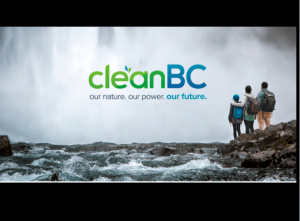 CASA has provided the B.C. Green caucus with an opportunity to champion key aspects of our economic platform, and the ability to work in partnership with government on our priority issues like climate policy.
CASA has provided the B.C. Green caucus with an opportunity to champion key aspects of our economic platform, and the ability to work in partnership with government on our priority issues like climate policy.
From our perspective, of course, these two files are one and the same.
Two key elements of our 21st century economy platform were embedded in the CASA agreement to help us identify and hence seize economic opportunities in the emerging economy.
The first was the Emerging Economy Task Force set up to advise government on how to respond and adapt to emerging economic challenges and opportunities. Government needs modernizing so that it is considerably more responsive to technological innovation.
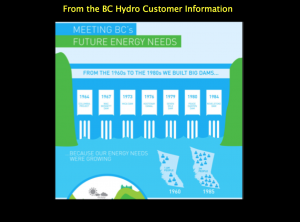 The Emerging Economy Task Force looks to the future, identifying emerging trends and advising government on how to maintain our competitiveness and achieve prosperity amidst these changes.
The Emerging Economy Task Force looks to the future, identifying emerging trends and advising government on how to maintain our competitiveness and achieve prosperity amidst these changes.
The second element from our platform integrated into CASA was the Innovation Commission (now Innovate B.C.) as well as the appointment of an Innovation Commissioner.
The innovation commissioner serves as an advocate and ambassador for the B.C. technology sector in Ottawa and abroad, to enable B.C. companies to more easily tap into existing federal programs and build key strategic relationships internationally.
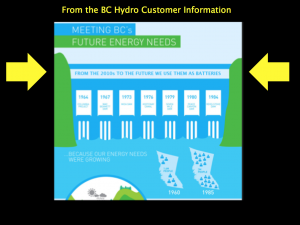 I’m confident that both of these initiatives will continue to bolster and grow key sectors of our economy.
I’m confident that both of these initiatives will continue to bolster and grow key sectors of our economy.
But of course, the most important words in CASA from my perspective are:
“Implement a climate action strategy to meet our targets”
which is why we pushed government to legislate these in the spring of last year:
GHG emissions are to be reduced by at least 40 per cent below 2007 levels by 2030, 60 per cent by 2040, and 80 per cent by 2050.
Targets without a plan to meet them are not worth the paper they are written on. Canadian political history is littered with a legacy of missed targets. And that’s why we turned our attention to delivering a pathway to reach these targets.
A meaningful climate plan requires careful planning, innovative ideas, and a new economic vision for how B.C. will prosper in a changing and challenging world.
If we are to meet our legislated targets — we will be doing so with clean energy — likely following the lead of people in this room.
In that regard, B.C. is setup to succeed. From our access to cheap, renewable energy, to our educated workforce, to our innovative business community, to the quality of life we can offer here, together with British Columbia’s natural beauty, we have an opportunity to develop our Province into one of the most prosperous jurisdictions in the world.
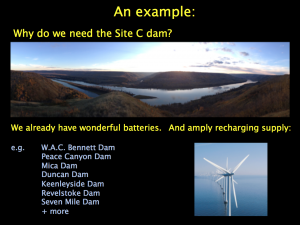 Our challenges are too big, and the consequences too profound, to ignore this opportunity.
Our challenges are too big, and the consequences too profound, to ignore this opportunity.
We stand to gain by building on the expertise that our neighbours have already developed in these areas. And yet, there is still so much room to grow in this sector, to improve upon current technologies and policy innovations.
The approval Site C was a terribly disappointing decision for me because I believe small-scale, distributed energy projects are the way of the future for B.C. and that we should fundamentally change the mandate of B.C. Hydro.
B.C. Hydro should no longer be the builder of new power capacity.
Rather, it should be the broker of power deals, transmitter of electricity, and leveller of power load through improving British Columbia power storage capacity.
Let industry risk their capital, not taxpayer capital, and let the market respond to demands for cheap power.
We need to optimize support for clean energy development, including grid storage for community or privately generated power and work with neighbouring jurisdictions to expedite the phase out of fossil fuel powered electricity generation.
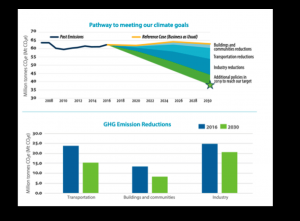 The future of economic prosperity in B.C. lies in harnessing our innate potential for innovation and bringing new, more efficient technologies to bear in the resource sector.
The future of economic prosperity in B.C. lies in harnessing our innate potential for innovation and bringing new, more efficient technologies to bear in the resource sector.
B.C. will never compete in digging dirt out of the ground with jurisdictions that don’t internalize the same social and environmental externalities that we value.
We will excel through being smarter, more efficient, cleaner and by working together to solve our problems.
This means that we not only export the dirt, but we also export the knowledge, technology and value added products associated with resource extraction.
To get a fair value for our resources that deliver maximum benefits to our communities, we need to get smarter and more strategic when it comes to embracing innovation.
Government should be doing more to support these initiatives and create fertile ground for a sustainable, resilient, and diverse economy.
We should be using our boundless renewable energy resources to attract industry, including the manufacturing sector, that wants to brand itself as sustainable over its entire business cycle, just like Washington and Oregon have done.
We should be setting up seed funding mechanisms to allow the B.C.-based creative economy sector to leverage venture capital from other jurisdictions to our province.
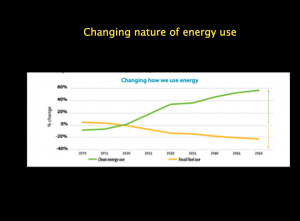 By steadily increasing emissions pricing, we can send a signal to the market that incentivizes innovation and the transition to a low carbon economy.
By steadily increasing emissions pricing, we can send a signal to the market that incentivizes innovation and the transition to a low carbon economy.
The funding could be transferred to municipalities across the province so that they might have the resources to deal with their aging infrastructure and growing transportation barriers.
Yes, we should be investing in trade skills, as described, for example, under a B.C. jobs plan.
But we should also be investing further in education for 21st century industries like biotech, high tech and cleantech. It’s critical that we bring the typically urban-based tech and rural-based resource sectors together.
Similarly natural gas has an important role to play, but we should use it to use in our domestic market and explore options around using it to power local transport.
Global investment trends are being driven by the world’s shared Paris commitments, predicated on the fact that keeping global warming under 2 degrees Celsius is far more cost-effective than dealing with the effects of a temperature rise above that level.
This shift presents a significant opportunity for B.C.’s economy.
Our province is well poised to bolster its leadership in the cleantech sector – we have a strong competitive advantage in the building blocks required to foster a knowledge-based economy.
For we know responding to the challenge of climate change is both an intergenerational opportunity and an intergenerational responsibility.
CleanBC’s sectoral approach doesn’t simply show a plausible pathway to meeting our targets – rather, it drives a return to the vision of a clean 21st century economy.
We have one of the best public services in the world and for a long time they have had the policies ready to get us there.
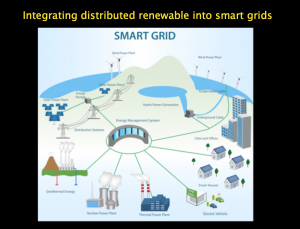 What has been missing is political leadership. This minority government must – and will – show that leadership.
What has been missing is political leadership. This minority government must – and will – show that leadership.
I’m hopeful, but still wary of our starting point and the strength of the status quo.
Yet I am truly excited about the prospects that lie ahead for this minority government. We’ve accomplished a remarkable amount already in just two short years.
But there is so much more to do. The years ahead will require all of us to come together to look for areas where we can be partners – to drive the innovation that will enable us to electrify our economy and decarbonize our energy systems. I don’t doubt that many of the emerging solutions we need will in fact come from the people in this room.
The transition to a low carbon economy presents an exciting challenge for the Clean Energy sector. For example, one of the flagship proposals within CleanBC is the aggressive Zero Emission Vehicle which came into law with the passage last week of the Zero Emission Vehicle Act.
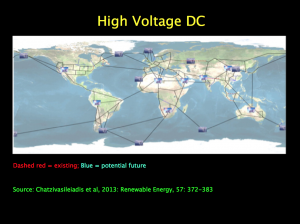 This act mandate that zero-emitting vehicle must make up 10% of light-duty vehicle sales by 2025, 30% by 2030, and 100% by 2040. The good news is that in the month of May alone, 15% of all new light-duty vehicle sales were zero-emitting.
This act mandate that zero-emitting vehicle must make up 10% of light-duty vehicle sales by 2025, 30% by 2030, and 100% by 2040. The good news is that in the month of May alone, 15% of all new light-duty vehicle sales were zero-emitting.
With the electrification of the transportation sector and our built environment comes the opportunity for innovation in smart grid systems.
Whether it be interconnecting myriad distributed production, with innovative local storage systems and point to point high voltage DC transmission, or whether it be the design of new electric transportation systems, or whether it be electrification of our natural resource sector, Clean Energy BC has a strong and vibrant future in our province.
And I remain committed to your sector and I ask that you help me help you. I don’t know what I don’t know. I don’t have all the solutions… but, I know that it is not this: